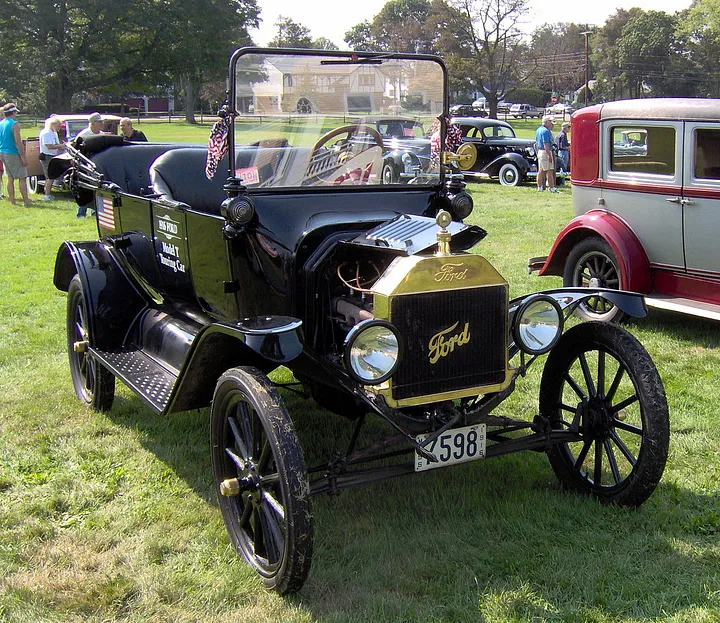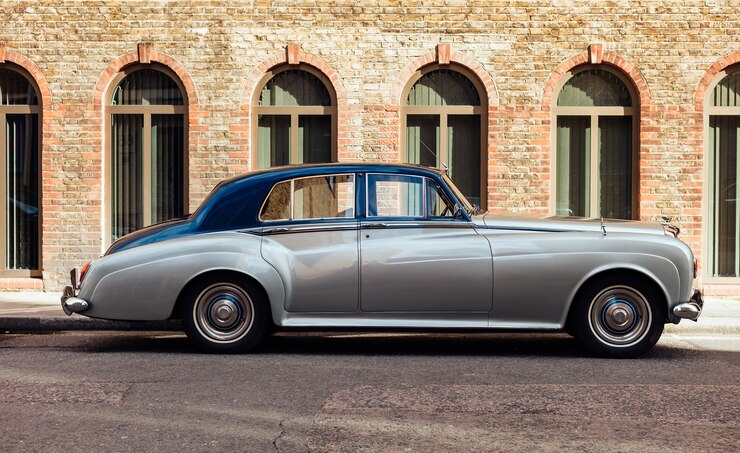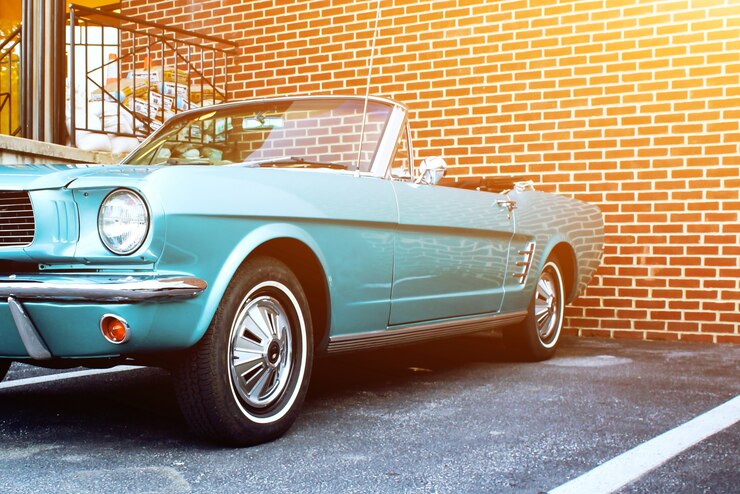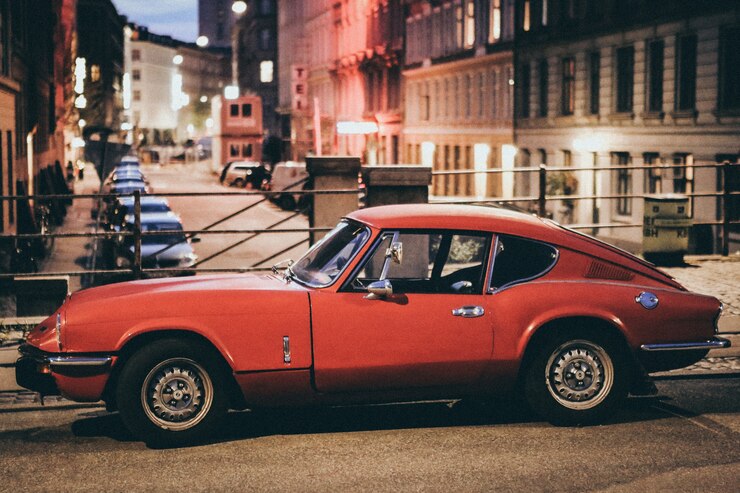Do you often find yourself confused about the differences between antique, classic, and vintage cars? You’re not alone. Many car enthusiasts struggle to understand the distinctions between these categories. But fear not! In this article, we will unlock the secrets and shed light on the subtle differences that set these cars apart.
Antique cars, defined as vehicles manufactured before 1919, represent the dawn of the automotive industry. Classic cars typically refer to vehicles manufactured between the 1920s and 1980s, which often possess a timeless appeal. And what about vintage cars? Well, they usually fall into the era between the 1919s and the 1930s, combining elegance and historical significance.
By delving into the unique characteristics, historical context, and popular models of these distinct categories, we hope to give you a comprehensive understanding of antique, classic, and vintage cars. So, buckle up and get ready to embark on a fascinating journey into the world of automotive history and enthusiasts’ passion for these extraordinary vehicles.
Antique Cars

Antique cars hold a special place in the hearts of automotive enthusiasts. These vehicles represent the very origins of the automobile industry, with their manufacturing dating back to before 1919. They are often seen as treasures, providing a glimpse into the early days of automotive innovation.
Antique cars are characterized by their historical significance and craftsmanship. The design elements of these vehicles reflect the styles and technologies of the time, with features like wooden frames, brass accents, and hand-cranked engines.
Owning an antique car requires a deep appreciation for automotive history and a commitment to preservation. These vehicles are not only a mode of transportation but also a window into the past. Restoring and maintaining an antique car is a labor of love, often involving sourcing authentic parts and working with skilled craftsmen who specialize in vintage automobile restoration.
Some of the most popular Antique Cars include:
- Ford Model A (1903–1904)
- Cadillac Model B (1905–1907)
- Buick Model 10 (1908–1910)
- Chevrolet Series C Classic Six (1912)
Classic Cars

Classic cars, often referred to as “timeless beauties,” are vehicles that evoke a sense of nostalgia and admiration. While there is no strict timeline, classic cars are typically considered to be those manufactured between the 1920s and 1980s. These cars have stood the test of time and continue to captivate enthusiasts with their design, performance, and cultural significance.
Unlike antique cars, classic cars span several decades, each with its distinct characteristics. From the sleek lines of the 1930s Art Deco models to the muscle cars of the 1960s and 1970s, classic cars offer a wide range of styles and options.
Classic cars are often sought after by collectors and enthusiasts who appreciate their timeless appeal and historical importance. These vehicles serve as a bridge between the past and the present, showcasing the evolution of automotive design and engineering. Owning a classic car is not just about the thrill of driving; it’s about preserving a piece of history and sharing it with future generations.
Some of the most popular classic cars include:
- Chevrolet Camaro (1967–1969)
- Ford Mustang (1964–1973)
- Chevrolet Impala (1958–1970)
- AMC Javelin (1968–1974)
- Plymouth Barracuda (1964–1974)
Vintage Cars

Vintage cars occupy a unique space in automobiles, combining elegance, sophistication, and historical significance. These vehicles typically fall into the era between the 1919s and the 1930s, encompassing both the end of the antique era and the beginning of the classic era. Vintage cars are known for their attention to detail, luxurious features, and exquisite craftsmanship.
Vintage cars often feature sweeping curves, ornate detailing, and luxurious interiors. These vehicles were the epitome of luxury and status during their time, with brands like Rolls-Royce, Bentley, and Bugatti leading the way.
Owning a vintage car is like owning a piece of art. These vehicles are meticulously maintained and showcased at prestigious car shows and events. Vintage car enthusiasts take pride in preserving the authenticity and historical accuracy of these vehicles, ensuring that they remain true to their original form and beauty.
Some of the most popular vintage cars include:
- 1919 -1929 Ford Model T
- 1925–1928 Chrysler Airflow
- 1925–1927 Aston Martin Grand Prix
- 1927–1931 Cadillac V-63
- 1930–1931 Cadillac V-16
Key Differences between Antique, Classic, and Vintage Cars
While antique, classic, and vintage cars share a common thread of historical significance, there are key differences that set them apart. Understanding these distinctions can help enthusiasts appreciate the unique qualities of each category.
One of the main differences lies in the manufacturing timeline. Antique cars were manufactured before 1919, classic cars were made between the 1920s and 1980s, and vintage cars typically fall between the 1919s and the 1930s. This timeline represents different eras in automotive history, each with its own technological advancements, design trends, and cultural influences.
Another difference lies in the design and features of these cars. Antique cars often feature brass accents, wooden frames, and hand-cranked engines, reflecting the early days of automotive engineering. Classic cars showcase a wide range of design styles, from the streamlined curves of the 1930s to the bold lines of the muscle cars in the 1960s and 1970s. Vintage cars, on the other hand, are known for their luxurious features, ornate detailing, and elegant aesthetics.
Additionally, the availability and rarity of these cars differ. Antique cars are the rarest, given their age and limited production numbers. Classic cars, while more common, can still have limited availability depending on the model and condition. Vintage cars, although not as rare as antique cars, are highly sought after and often command high prices due to their historical significance and craftsmanship.
Factors that affect the value of Antique, Classic, and Vintage Cars
The value of antique, classic, and vintage cars is influenced by various factors. These factors include the car’s condition, rarity, historical significance, provenance, and desirability among collectors. Let’s explore each of these factors in more detail:
1. Condition: The overall condition of the car plays a crucial role in determining its value. Cars that have been well-preserved and maintained over the years are generally more valuable than those in poor condition. Originality, authenticity, and the presence of any modifications or restorations also impact the value.
2. Rarity: The rarity of a car affects its value. Limited production numbers, special editions, or unique features can make a car more desirable among collectors, driving up its value. The scarcity of certain models increases their appeal to enthusiasts seeking something truly unique.
3. Historical Significance: Cars with historical significance, such as those associated with famous personalities or iconic events, tend to have higher value. The historical context and story behind a car can greatly enhance its appeal and make it more valuable to collectors and museums.
4. Provenance: The car’s provenance refers to its documented history and chain of ownership. Cars with well-documented histories, including original purchase receipts, service records, and ownership lineage, are highly valued. Provenance provides authenticity and adds to the car’s story and allure.
5. Desirability: The desirability of a car is influenced by factors such as brand reputation, design, performance, and cultural significance. Models that are highly sought after by enthusiasts and collectors often command higher prices, regardless of their age.
Considering these factors when buying or valuing an antique, classic, or vintage car is crucial to ensure a fair price and a wise investment.
Tips for buying and maintaining antique, classic, and vintage cars
Buying and maintaining antique, classic, and vintage cars requires careful consideration and attention to detail. Here are some tips to help you navigate the process:
1. Research: Before making a purchase, thoroughly research the specific make, model, and era of the car you are interested in. Understand its history, common issues, and market value. This knowledge will help you make an informed decision and negotiate a fair price.
2. Authenticity: When buying an antique, classic, or vintage car, authenticity is key. Look for original parts, matching numbers, and period-correct features. Be cautious of modified or heavily restored cars, which may impact their value and historical accuracy.
3. Inspection: Have a professional inspection conducted before finalizing a purchase. An expert can assess the car’s condition, identify any hidden issues, and provide an accurate valuation. This step is crucial to ensure you are making a sound investment.
4. Maintenance: Owning an antique, classic, or vintage car requires regular maintenance and care. Research the specific maintenance requirements for your car model and follow them diligently. Find a trusted mechanic with experience working on vintage vehicles to ensure proper care and preservation.
5. Join Communities: Engage with fellow enthusiasts and join car clubs or online communities dedicated to antique, classic, and vintage cars. These communities offer valuable resources, advice, and support. You can learn from experienced owners, attend car shows, and connect with like-minded individuals who share your passion.
By following these tips, you can make informed decisions when buying and maintaining antique, classic, and vintage cars, ensuring that you enjoy these extraordinary vehicles for years to come.
By following these tips, you can make informed decisions when buying and maintaining antique, classic, and vintage cars, ensuring that you enjoy these extraordinary vehicles for years to come.
Conclusion:
Antique, classic, and vintage cars hold a special place in the hearts of automotive enthusiasts. These vehicles represent the rich history of the automotive industry, showcasing the evolution of design, technology, and cultural influences. Understanding the distinctions between these categories allows enthusiasts to appreciate the unique qualities and significance of each era.
Whether you are captivated by the elegance of antique cars, the timeless beauty of classic cars, or the sophistication of vintage cars, the allure of these extraordinary vehicles is undeniable. Owning and maintaining an antique, classic, or vintage car is not just about driving; it’s about preserving a piece of history, sharing a passion, and being part of a vibrant community of enthusiasts.
So, next time you come across a beautifully restored antique car, a meticulously maintained classic beauty, or an exquisite vintage gem, take a moment to appreciate the craftsmanship, the stories, and the passion that went into creating these automotive masterpieces. Unlock the secrets, understand the distinctions, and embark on a journey into the world of antique, classic, and vintage cars.

